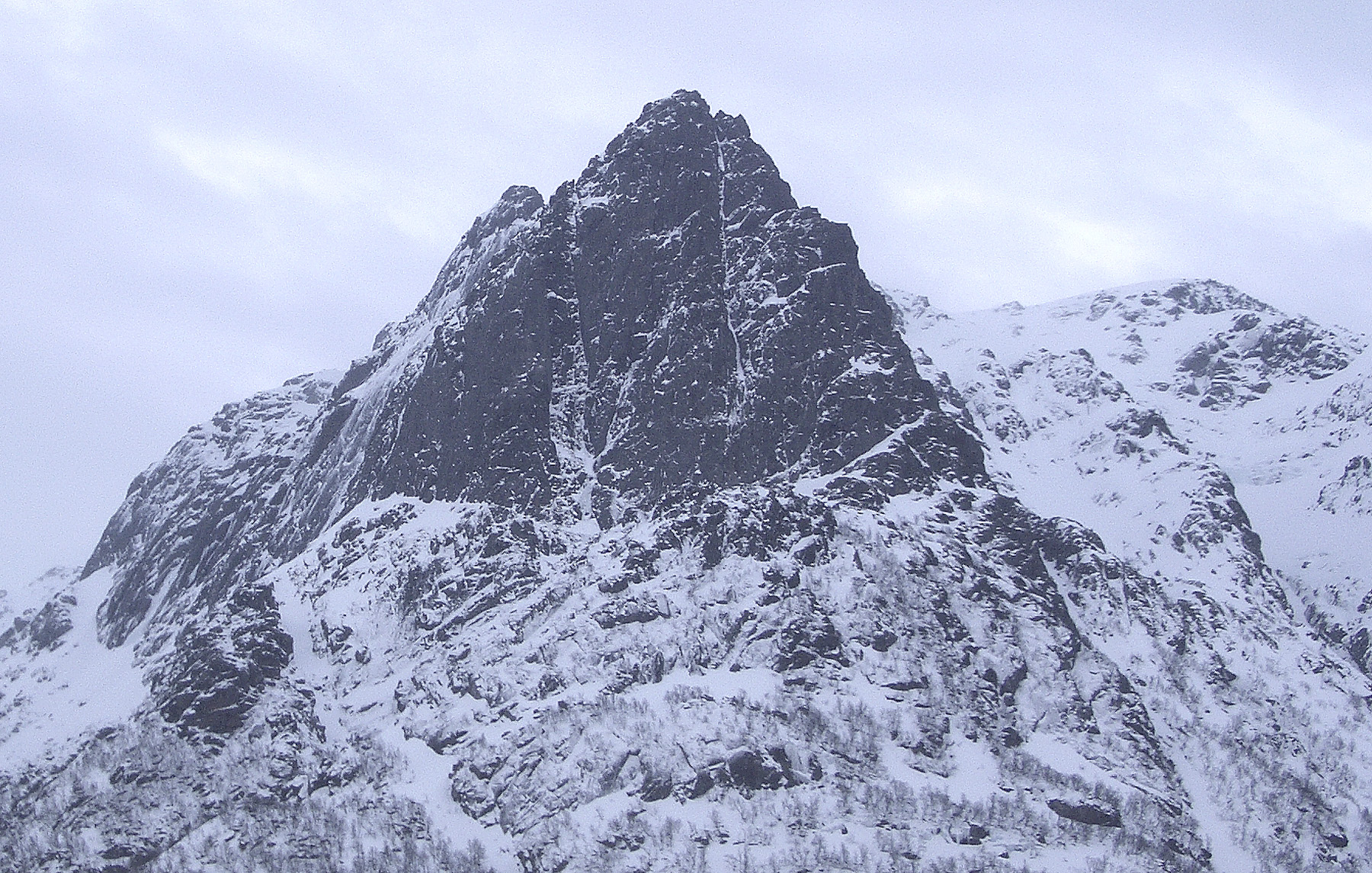Abrahams Tind, Nothing Compares to You
Norway, Lofoten

“Up here, there is more ice than in Europe and Canada combined.” Bold words from Marius Morstad, who invited two alpinists from every UIAA country for an international gathering in Lofoten. “We promise fresh fish daily.” OK, I’m convinced.
I land in Narvik with Patrick Rothlin and meet the French and Czech teams. In a car loaded beyond capacity, Andreas Klarstrom, a young Norwegian ice climbing ace, races through the night, disregarding snow drifts and black-ice passages. He’s in a bad mood. Two weeks previously foreign climbers completed one of the great lines in Norway—and placed a few bolts. This is taboo in Norway and remained the topic of conversation for the following week. The event organizers wanted to promote winter alpinism in Lofoten but maintain its adventurous character. The Norwegians are in agreement: on alpine terrain they want no bolts.
This doesn’t present a problem for us; we only want to climb steep, compact waterfalls. And that’s the problem on Lofoten. “Rock is rock, and ice is ice,” says Marius, indicating that local climbers have a different understanding of ice-climbing from ours. Deeply influenced by Scottish mountaineers and their weather, ice-climbing here takes place on iced-up rock routes and snowed- over, moss-covered walls. Torf [turf] is what they call frozen grass tuffs, their eyes glowing when they speak of them. Frozen waterfalls are nowhere to be found. Keeping our expectations in check, we invest a day in discovering the potential of the region. Just half an hour’s drive from our base at Kalle, we find a compact, perfectly formed, almost 400m-high rock pyramid. A hair-thin ice line runs directly down the wall, from summit to ca 50m from the ground, where it disappears into granite bedrock. Another line like this does not exist, perhaps could not exist. Without hesitation we decide to attempt it the following day.
As mountain guides we are used to getting up early, but don’t necessarily want to during vacation. Despite the Russian team creating a ruckus at 6 a.m., no one else gets out of bed before 7 a.m. Carrying heavy sacks and wearing snowshoes, we attempt to shorten the approach by going directly across the frozen fjord. However, Patrick, who regards any turns on skis as a sign of cowardice, becomes the scaredy cat and panics at the thought of wet feet. So we slog around the entire waterway, arriving at the base of the route after almost 2½ hours. The line is clear: a vertical, moss-filled crack leading directly to an ice hose. It is every ice-climber’s dream. Four hours later only 20m separates us from the start of this dream. That may sound good, but it means we had only climbed 30m. Then, with little danger of wet feet, Patrick showed his true colors. Fearlessly he scraped the small amount of ice from the crack, plugged in Friends, hammered wobbly pitons, and an hour later reached a point two meters above the stance." No way. We’re either too wimpy or weak.
Next morning we cut the approach to 1½ hours and arrived at the foot of the wall pumped. This time we tried a crack system farther right. A perfect 10m-long hand crack helped us through the crux. Too bad that the only Friend that would fit was down on the beach. The suffering was long, but our words were short. Patrick made it. I was left with the pleasure of leading the remaining 40m of vertical moss-covered wall. Thank God it was time to rappel for dinner. Tomorrow is another day.
At our lodgings we swapped info with other teams. Again the topic of bolts arose. I’ve probably placed more bolts than some of these guys will clip during their entire lives, and I’m decidedly for bolts after having several bad experiences. Nonetheless we couldn’t escape the fascination of working only with removable gear. We decided we would either climb our dream line clean or leave it for others.
Day three. It snowed during the night, and worse weather was forecast. It was time for one last try. Two steam engines raced to the base of the line. With snowshoes and crampons cached in the right places, and the trail broken, we regained our high point by 10:30 a.m., and were greeted by a cloud of spindrift.
The next seven hours were climbing heaven. Overhanging torf passages, ice-filled cracks— the climb exceeded all expectations. When the sun poked out from the clouds at noon, we took it as a bonus. In 400m we found no easy sections, nor a single ledge. The ice was continuously vertical, sometimes even overhanging. Five minutes before dusk we reached the summit. Even though it is visible from the road, Abrahams Tind had not previously been climbed. A local fisherman could hardly believe it was possible to reach its top, and we had a hard time believing it ourselves. Although the altitude would be insignificant in the Alps, a 900m summit can still be immensely fascinating. We called our route Nothing Compares to You (WI6 M6+, 420m).
While we ate breakfast two days later, the Czechs were in the process of repeating our route [Editor’s note: The Czechs graded their ascent WI5 M6], while we were trying to decide whether to spend another day in Bacalao Cafe or tackle one of the short gullies above the street. Marius really didn’t exaggerate. There is potential for millions of new routes along the coast of northern Norway.
Urs Odermatt, Switzerland (translated by Martin Gutmann)





